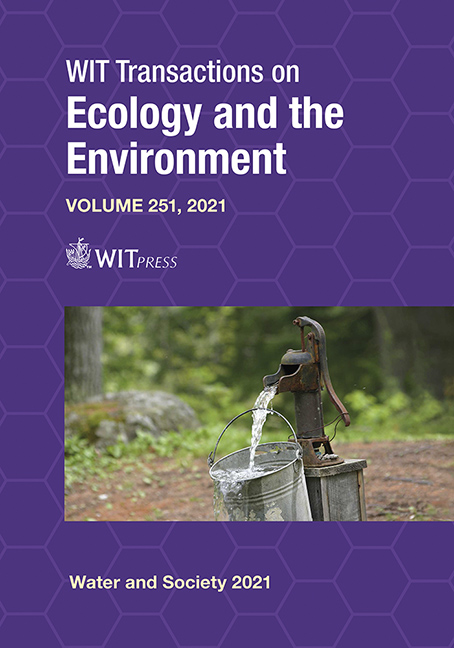FURTHER DEVELOPMENT OF THE EBBSFLEET WATER MANAGEMENT SYSTEM DYNAMICS MODEL: ADJUSTING REPRESENTATION OF PROCESSES AND SYSTEM BOUNDARIES, INCENTIVISING STAKEHOLDER RE-ENGAGEMENT, AND EXPLORING POTENTIAL FOR UNIVERSITY TEACHING
Price
Free (open access)
Transaction
Volume
251
Pages
12
Page Range
11 - 22
Published
2021
Size
319 kb
Paper DOI
10.2495/WS210021
Copyright
Author(s)
VLADIMIR KRIVTSOV, ALESSANDRO PAGANO, SANGARALINGAM AHILAN, EMILY O’DONNELL, IRENE PLUCHINOTTA
Abstract
System Dynamics Model (SDM) that explores sustainable urban water management. The model is open-source compiled using Vensim software, which is free for non-commercial use. This paper demonstrates that the current SDM and the modelling approach are open to adjustment, which is illustrated by introducing a link between water tariffs and environmental awareness. The increase in water tariffs leads not only to the obvious increase in water bills, but also to an increase in Environmental Awareness, and consequently, to increases in the use of water efficiency devices, grey water acceptability, and grey water reuse. A range of further modifications is suggested, including expanding representation of sustainable drainage systems (SuDS) to consider resultant improvements in stormwater quality as well as quantity. This would recognise the indirect benefits of improved stormwater quality on biodiversity in the River Ebbsfleet, which is the receiving watercourse. This study intends to encourage knowledge transfer, by facilitating and incentivising the use and further development of the SDM by stakeholders and a wider community of end-users, including practitioners, academics and the public. While SDM is particularly suited to analysis of indirect relations, benefits and trade-offs among system constituents, other approaches provide viable alternatives and we discuss the potential for re-implementing our findings in other interactive modelling software packages and programming languages. We also explore the scope for linking the adapted SDM to other models. Finally, we consider the utility of the Ebbsfleet SDM in teaching, learning and knowledge transfer. We conclude that students, practitioners and other stakeholders could not only enhance their understanding of urban water management complexity, but also gain valuable system modelling skills based on using the SDM to support kinaesthetic learning. Ultimately, society benefits when the level of knowledge and analytical thinking skills of its members are enhanced.
Keywords
water balance, system thinking, water security, societal benefits, sensitivity analysis, nature-based solutions, industrial ecology, public engagement, pricing policy, ‘what-ifȁ





